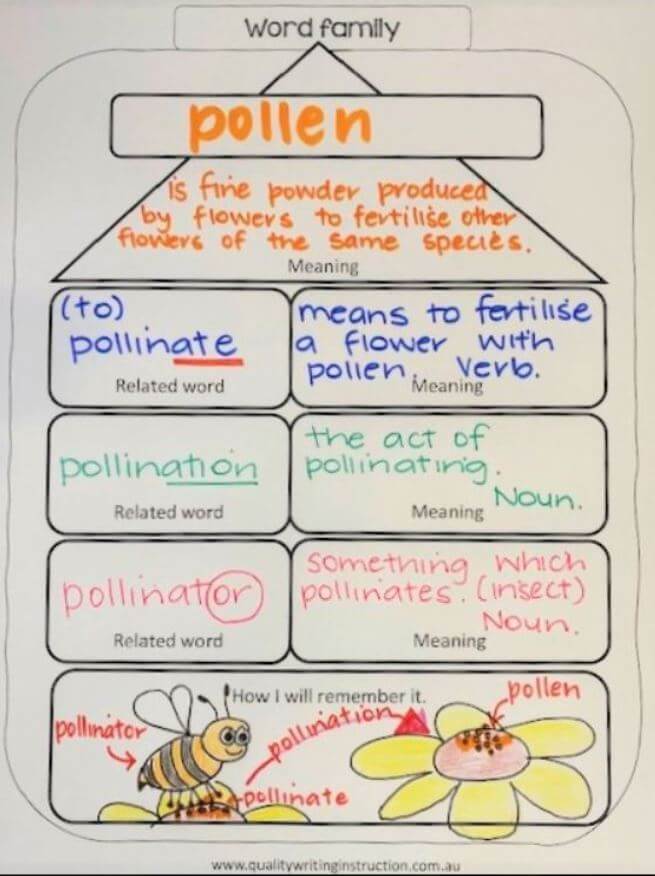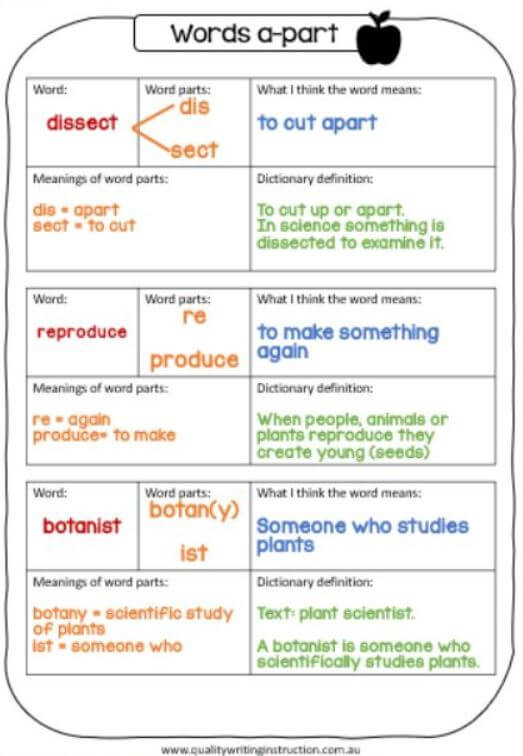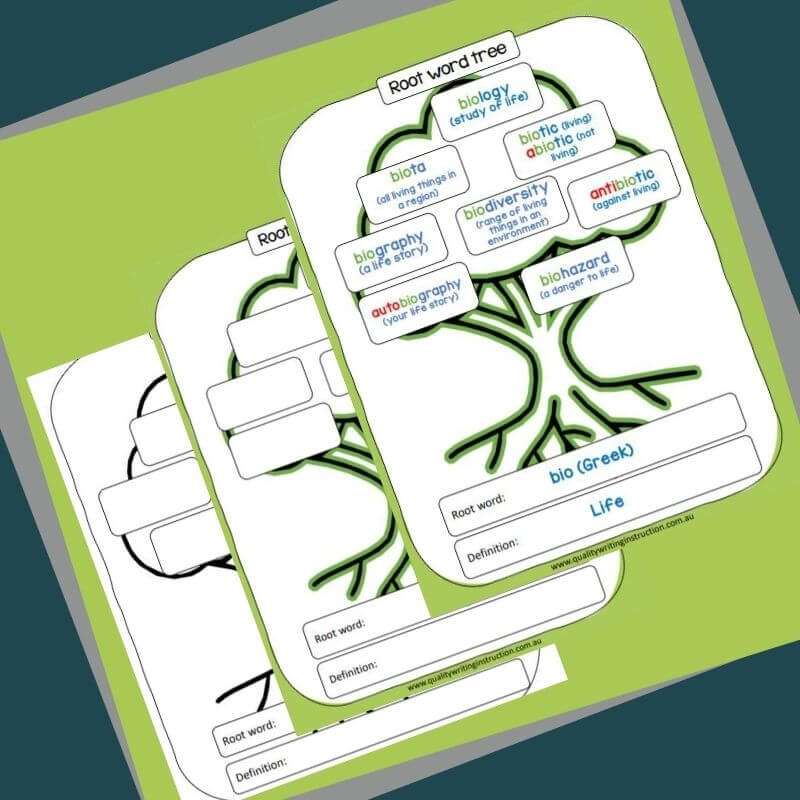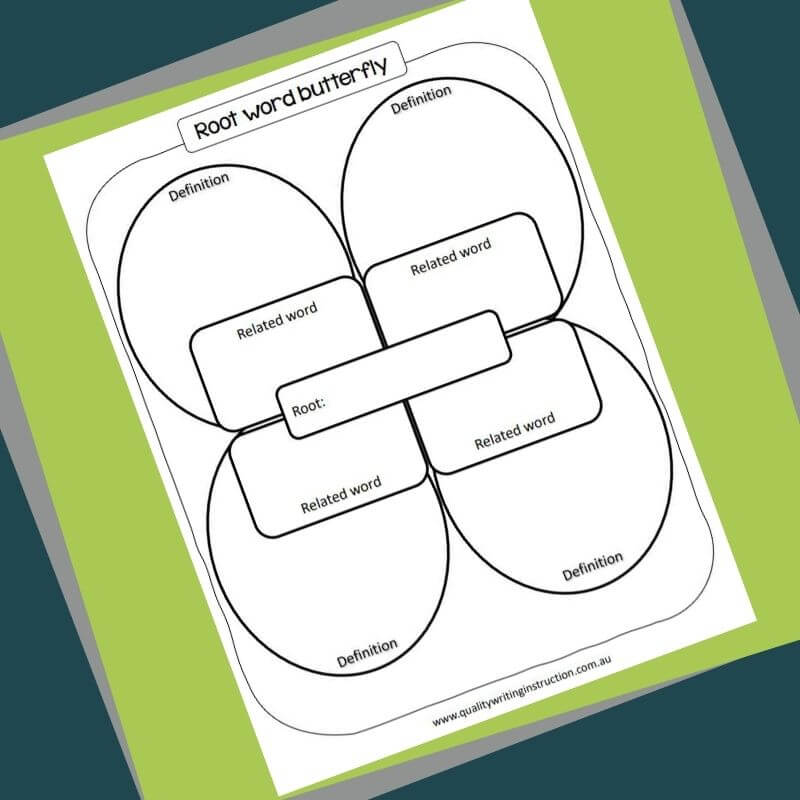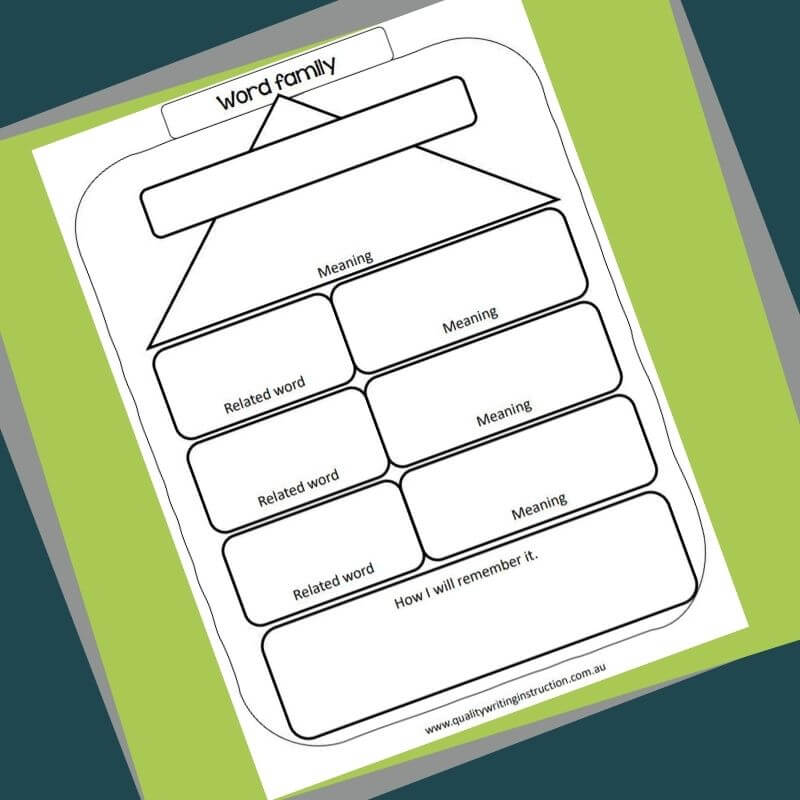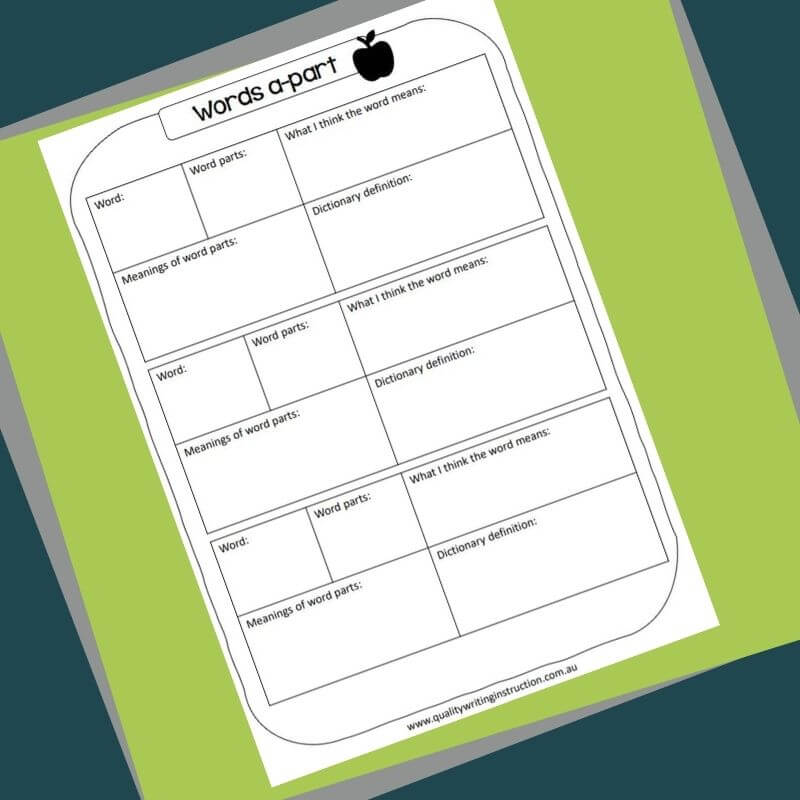5 Tips for Teaching Writing for Science

By KELLIE
Teaching writing for Science presents unique challenges and opportunities. Vocabulary is a perfect bridge between reading and writing, so any time spent working with words is well worth it and should not be underestimated.
Science, as a learning discipline, relies heavily on students being able to understand and use specific terms and concepts. A focus on expanding students’ scientific vocabulary can not only be fun, but understanding how words are made, and how they relate to others, provides students with strategies and skills they can apply to any unknown, or difficult words, they encounter.
Here are 5 tips for keeping writing for science fun, engaging and memorable.
1. Characteristics of scientific writing
When writing for science, students need to remember to:
• be clear, accurate and concise – no unnecessary detail or ambiguous language.
• write in an impersonal and active voice – keep the writing formal and depersonalised.
• use objective language rather than subjective language.
• write in past tense, or combined tense, depending on the purpose for writing.
• use technical terms and vocabulary to describe the concepts, features and
processes of science.
• support any assertions, ideas and statements with evidence.
• sequence and connect their ideas logically – use headings to create clear sections.
Download our one-pager pdf listing the above characteristics of writing for science.
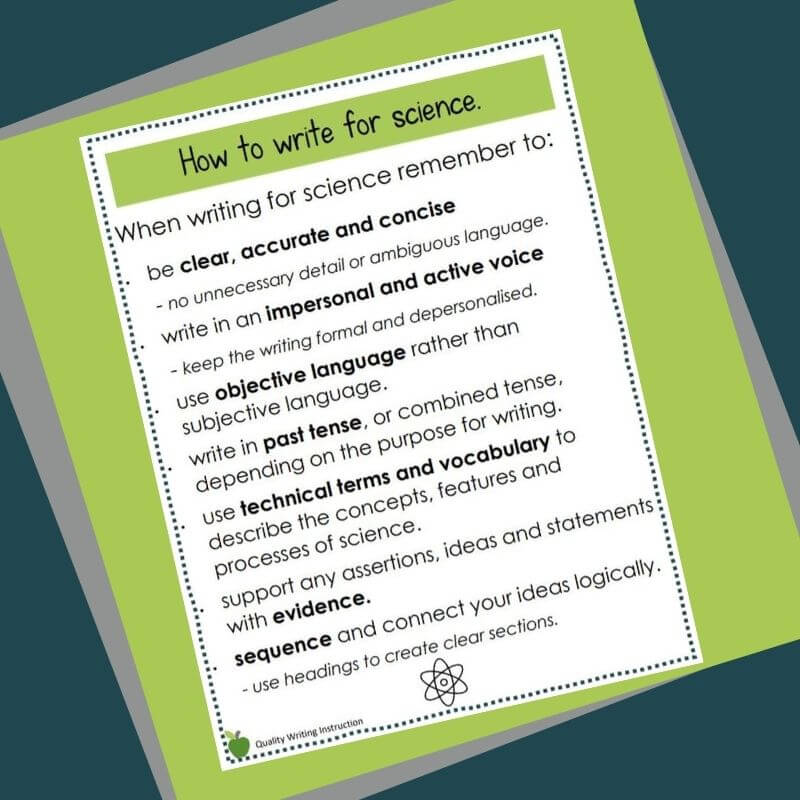
2. Celebrate National Science Week
Be sure to mark National Science Week in your calendar, which occurs every August. Don’t try to go it alone (particularly if you are new to teaching) as there are some incredible resources on the National Science Week website.
The National Science Week team works in conjunction with the Australian Science Teacher Association. Each year they produce a brand new swag of teaching resource books, student journals, posters, interactive flip books, and even augmented reality tools.
Grants can be accessed for school-wide events, or you can utilise resources to implement activities in your classroom (as we demonstrate examples below).
Themes of recent years (available on the website) include:
- 2020 – Deep Blue: innovations for the future
- 2019 – Destination Moon: more missions, more science
- 2018 – Game Changers and Change Makers
- 2017 – Future Earth
- 2016 – Drones, Droids and Robots
- 2015 – Making waves: the science of light
3. Be visually creative
Scientific writing may be impersonal and technical, but scientific language activities need not be. There are a wide range of visual scaffolds and graphic organisers to draw on and research tells us that combining words with images facilitates recall.
During National Science Week, we selected a few graphic organisers to use in our scientific word activities. A text shared on the National Science Week website called ‘Backyard Bioblitz – Flower Dissection‘ was the mentor text for these two examples.
The ‘word family’ links a base word with related words that have been extended or modified using affixes. Encourage students to create a visual reminder of what they have learned about how the words relate to each other.
Students should also be guided to write a reflective summary on how these words relate to each other, and how suffixes and prefixes help to work out the meaning of words. For example, the students could write that the word pollination is an example of nominalisation and is built on the base word pollen. The suffix ‘tion’ usually indicates that something is happening (an act or action, or the result of an action).
In the early years, explore how common suffixes such as ‘ing’, ‘ed’ and ‘s’ and prefixes such as ‘un’, and ‘re’ change the meaning of base words.
Encourage students to always be on the ‘look out’ for base words and their extensions.
This ‘Words a-part’ example also uses the ‘Backyard Bioblitz – Flower Dissection‘ mentor text to demonstrate how to investigate key vocabulary before, during and after reading focusing on the words students will be using in their writing.
It is important students thoroughly understand the subject-specific and technical words they will use in their writing. As students build their base of word roots, their responses to ‘what I think the word means” will become increasingly accurate.
Use the words explored to continue to build word families, and to add to students understanding of how words work. Again, encourage students to reflect on what they have learned through writing.
Students require multiple opportunities to explore and practise the words they will be using in their writing, and this is best done through reading and speaking first.
Download our graphic organiser templates.
4. Use picture books
Picture books make for wonderful mentor texts when exploring scientific language, and not just for early years.
Picture books can help build students’ content knowledge, as well as explore sometimes complex ideas in an imaginative way. The 5 beautiful books we have chosen for our list ‘5 Picture Books for Teaching Science‘ are most likely already in your school library.
5. Unleash a love for Greek & Latin root words
Teaching writing for science offers the perfect opportunity to celebrate the influence of (mostly) Greek words on our modern-day scientific vocabulary.
Never miss an opportunity to introduce students to Greek and Latin roots. Even young children know about and love dinosaurs (from Greek deinos ‘terrible’ + sauros ‘lizard’) and can rattle off their scientific names. Anyone who can name a Triceratops should be just as delighted to know that it basically means ‘three-horned face’. And through Greek words, you can connect Tyrannosaurus rex to both tyrants and kings!
While learning about living and non-living things in the early primary years be sure to introduce students to the scientific terms ‘biotic’ and ‘abiotic’, and relate them to other words they may encounter.
This understanding of the influence of Greek words on scientific vocabulary will serve students very well in secondary school and beyond. If you’ve ever sat marking assessments while watching ‘The Chase’, you’ll understand another reason why having a good grip of Latin and Greek can set you up for life!
We have put together a booklet listing the most common Latin & Greek words, with examples. There is plenty of room for your students to add more.
Suitable for Primary and Secondary students.
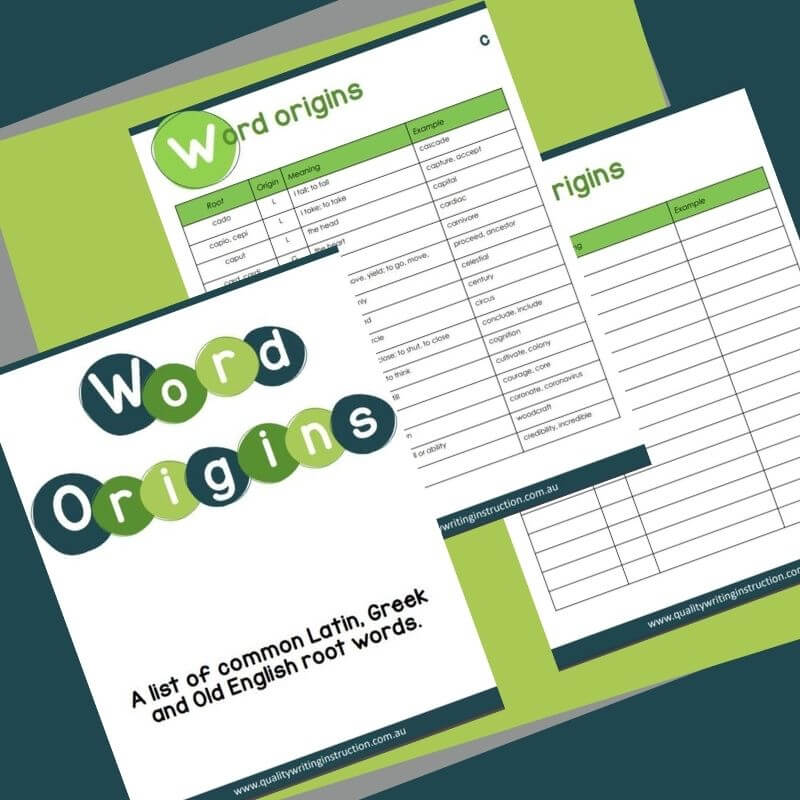
Love to talk about Science and share your teaching experiences? Join us in The Lounge.
“The Lounge” is Quality Writing Instruction’s Facebook group, where you can share ideas and get support from a fabulous group of like-minded teachers.
